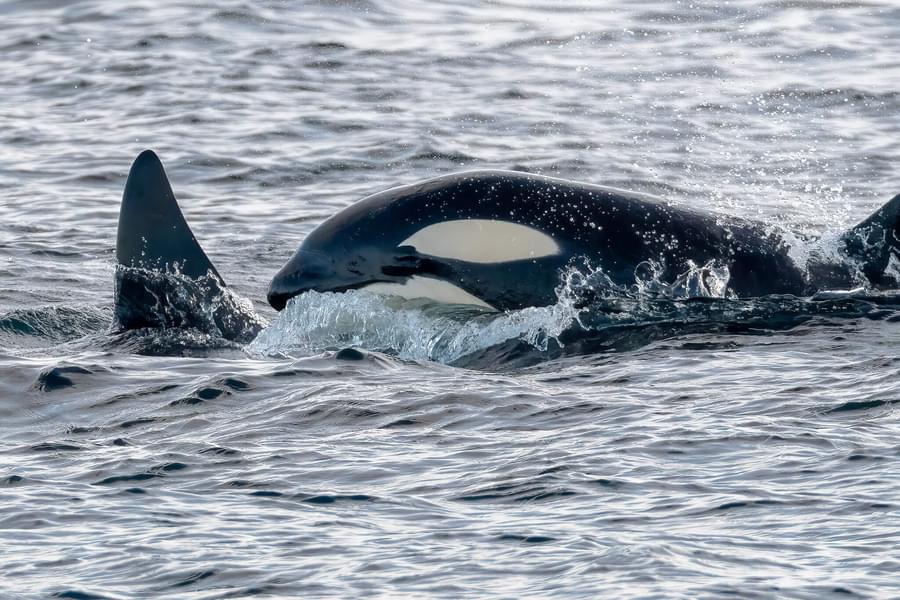The Humboldt current, which sweeps up the West coast of South America, is a veritable larder of food for resident cetacean populations. But, some of them are surprisingly picky about their prey species. None more so than the Menacho orca pod.
Five different orca ecotypes are reported in the southern hemisphere: while some prefer fish, others, like Type A and Type B1 orcas, focus on marine mammals that are becoming better understood.
A 2022 study had described the Menacho pod as foraging on South American sea lions and pursuing mixed groups of dusky and common dolphins, but there had been no evidence of hunting being successful. Until now.
A paper in Frontiers in Marine Science, written by a team of scientists led by Dr Ana García Cegarra of the Universidad de Antofagasta has recorded the hunting and killing of dusky dolphins by orcas, and also the breaking up and sharing of the carcass amongst other pod members. In both cases, an adult female held the carcass in its mouth and allowed others to tear off smaller portions of dolphin meat to eat.
Speaking to CNN, Cegarra said that, during one of the meals, an orca calf approached the scientists’ boat with a mouthful of dolphin meat. A similar interaction was previously documented in Australia between an orca and a diver but had never been observed in the Humboldt Current. One interpretation is that the orca was offering to share its food.
It’s not clear if the dolphin hunting was a coordinated exercise amongst the pod, but it does seem as though the pod is far from being exclusively pescatarian in their food choices. One caveat here is that the social, matriline act of food-sharing itself may be the bigger reason why these larger mammals are targeted, perhaps even more so than it being a dietary preference.
Cooperative hunting has been recorded for Type B orcas foraging on seals in the Antarctic Peninsula. They are pack-ice specialists, who have finessed a wave-wash attack that often results in the capture of Weddell seals, dislodging them from the relative safety of the ice and tipping them into the sea. These Type B orcas also share their prey in every hunting event, so that all group members feed. Similarly, Type A orcas in Argentina intentionally strand themselves in pursuit of South American sea lions and elephant seals. Type A orcas share food with group members even though only one individual undertakes the stranding event.
In Chilean Patagonia, orcas have been observed foraging on sea lions and fur seals as well as attacking sei whales and fin whales. The Antofagasta study found new evidence of fin whale dorsal fins with orca tooth rake marks, perhaps indicating that orcas at least attack fin whales in northern Chile.
Main photo credit: Kev Barwell
/SMJ_4616.jpg?w=600&h=400&q=85&auto=format&fit=crop&crop=focalpoint&fp-x=0.5086&fp-y=0.4799&dm=1684241020&s=e6710630fda5de79e1ecb822dec537f4)
ORCA's work to protect whales and dolphins has never been more important and to help safeguard these amazing animals for the future we need your help. Please support our work by donating at www.orca.org.uk/donate to help us create oceans alive with whales and dolphins

